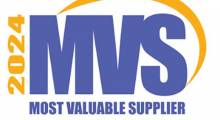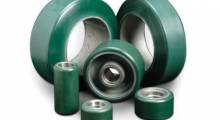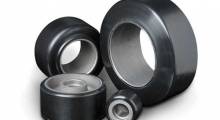Forklifts have transformed from mobile spatulas to mobile high-tech offices in just a few years. In a traditional office, any investment in desktop computers is governed by specifications that satisfy operational needs, security concerns and total cost of ownership. When it comes to mobile computers and forklifts, however, many operations have started from scratch and learned the tradeoffs of performance, cost and durability the hard way.
“A person looking for a forklift-mounted computer is probably not realizing the true duty cycle,” says David Paufler, industrial marketing manager for Datalogic. “The biggest blind spot is a lot of people don’t realize a forklift has no suspension, so something mounted on it will receive every bump and shock.”
Paufler says the past few years have seen widespread experiments with consumer-grade devices. Backed up in the Cloud, the semi-disposable nature of consumer devices seemed a viable alternative to rugged, more expensive devices. But, issues of shock damage and connector wear and tear became evident.
“They want to use a device for more than one application, so if the operator is only driving for 50% of the day, they want the computer to go with him for the other 50%,” Paufler says. “That led them to tablets, which is cool, but they face issues of durability. A wave of iPad users has been coming to us. They’re dying with these consumer devices they throw out every six months.”
Operations quickly learn the asset cost is 20%, and the remaining 80% is maintenance and support. Paufler says it’s critical to select the type of device that fits the work at the task and operational level. Some might find a smart phone is more than enough. Some choose a tablet so they can use CANbus for data, and others want a full-time device that’s always connected. An array of consumer devices, industrial phones and tablets, or full vehicle-mount terminals (VMTs) is available.
There are lots of options, Paufler says. Maybe a scanner linked to a VMT is ideal, but does the operator occasionally go away from the terminal? Maybe they wouldn’t have to if the handheld scanner has a 20-meter range. Or, perhaps it would be better to use a detachable tablet?
The industry’s approach to technology’s rapid change has been to emphasize flexibility and future-proofing. An average VMT has a variety of ports to support future accessories.
“It’s much easier to be future-proofed with VMTs,” Paufler says. “You need good connectivity with the host system, good Wi-Fi so you maintain a connection, and a processor and memory that can handle the load. Once you have those three, everything else is a peripheral.”
Plus, there are the software considerations. Most customers are still running off terminal emulation, Paufler says, and although many good modern interfaces exist, emulation precludes custom applications since it’s simply a graphic overlay on an existing system.
“As some of the go-to options phase out, like Microsoft support for Windows CE, the question about operating system pops up,” Paufler says. “It’s not that big a hurdle. What they’re worrying about is the lifecycle. But, somebody buying a mobile computer for a forklift can pick what they want and know the big vendors are going to be there with that product for the next 10 years.”
Article topics










